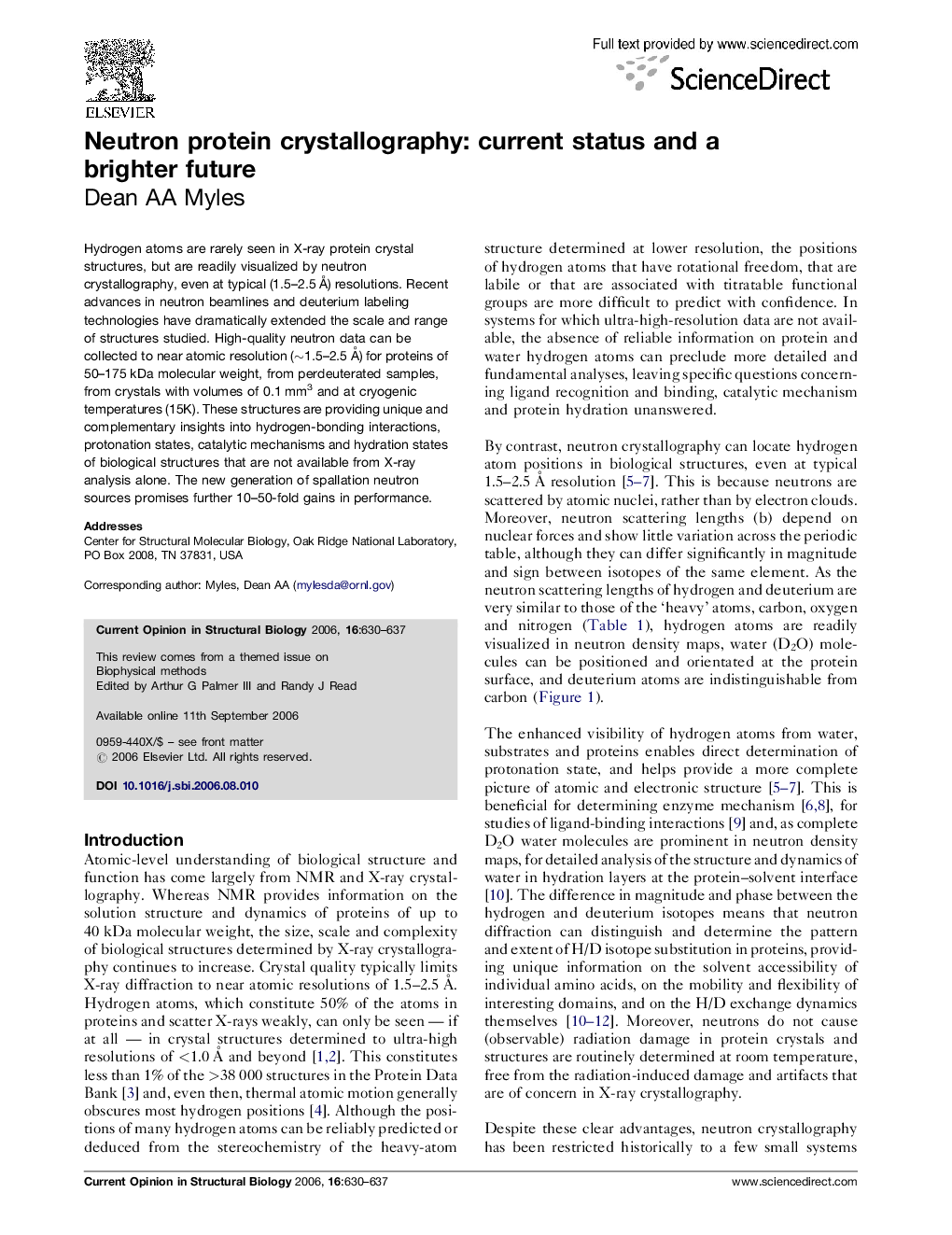| Article ID | Journal | Published Year | Pages | File Type |
|---|---|---|---|---|
| 1979837 | Current Opinion in Structural Biology | 2006 | 8 Pages |
Hydrogen atoms are rarely seen in X-ray protein crystal structures, but are readily visualized by neutron crystallography, even at typical (1.5–2.5 Å) resolutions. Recent advances in neutron beamlines and deuterium labeling technologies have dramatically extended the scale and range of structures studied. High-quality neutron data can be collected to near atomic resolution (∼1.5–2.5 Å) for proteins of 50–175 kDa molecular weight, from perdeuterated samples, from crystals with volumes of 0.1 mm3 and at cryogenic temperatures (15K). These structures are providing unique and complementary insights into hydrogen-bonding interactions, protonation states, catalytic mechanisms and hydration states of biological structures that are not available from X-ray analysis alone. The new generation of spallation neutron sources promises further 10–50-fold gains in performance.
